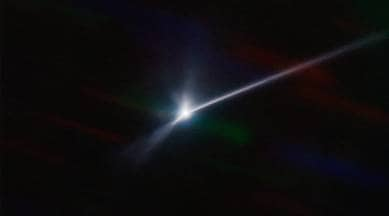NASA’s DART Mission successfully changed the course of an asteroid. What next?
NASA has confirmed that the DART mission was successful in altering the orbit of the asteroid Dimorphos around the larger asteroid Didymos. Here is what comes next for the mission.

After analysing data over the past two weeks, NASA has confirmed that the DART spacecraft successfully managed to change the motion of the asteroid Dimorphos by crashing into it. This is the first time that humanity has changed the motion of a celestial object. This is also the first demonstration of the “kinetic impactor” method of asteroid mitigation.
DART mission success
“All of us have a responsibility to protect our home planet. After all, it’s the only one we have. This mission shows that NASA is trying to be ready for whatever the universe throws at us. NASA has proven we are serious as a defender of the planet. This is a watershed moment for planetary defence and all of humanity,” said NASA chief Bill Nelson in a press statement.
Before the crash, NASA put down the minimum definition of success as an orbital period change of 73 seconds or more. At the time, Dimorphos took about 11 hours and 55 minutes to orbit the larger asteroid Didymos. After the crash, DART teams have confirmed that the impact shortened the orbit b 32 minutes, with it now Dimorphos now taking only 11 hours and 23 minutes to orbit the larger asteroid. DART surpassed the minimum benchmark by more than 25 times.
Next step
But measuring the orbital change is just the first step towards understanding the effect of the DART impact on the asteroid. The focus will now shift towards measuring how efficiently the spacecraft transferred its momentum to the asteroid. Scientists will have to further analyse the tons of asteroidal rock that was displaced by the impact.
According to NASA, DART’s push of Dimorphos was made more efficient by the recoil from the sudden blast of debris leaving the asteroid, like how the jet streaming from a balloon sends it racing in one direction. The debris that left the asteroid has formed a trail over 10,000 kilometres long.
Dimorphos’ physical properties
But to understand the effect of the recoil, scientists need more information about Dimorphos’ physical properties, like its surface characteristics, how strong it is and other details. They are still investigating these matters.
“DART has given us some fascinating data about both asteroid properties and the effectiveness of a kinetic impactor as a planetary defence technology. The DART team is continuing to work on this rich dataset to fully understand this first planetary defence test of asteroid deflection,” said Nancy Chabot, the DART coordination lead from the Johns Hopkins Applied Physics Laboratory (APL), in a press statement.
Astronomers study the final images taken by the DART spacecraft for further analysis. They will also use images from the LICIACube CubeSat. Further, the European Space Agency’s Hera project will conduct more detailed surveys of both Didymos and Dimorphos in the next four years, while focusing on the crater left by DART. It will also look to get a precise measurement of Dimorphos’ mass.